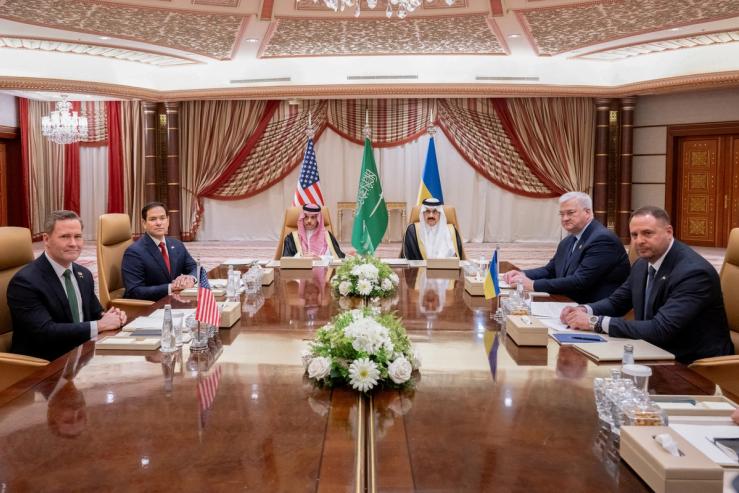The News
Ukraine said it agreed to a US-backed plan a 30-day ceasefire that would now be put forward to Russia. The agreement came after Kyiv and Washington officials met in Saudi Arabia for their first high-level talks since the Oval Office meltdown last month between Ukrainian President Volodymyr Zelenskyy and US President Donald Trump.
US officials said they would present the proposal to Russia. Washington will also lift the pause on intelligence-sharing and “security assistance” for Kyiv.
Both countries’ delegations also discussed the need for prisoner exchanges and the return of forcibly displaced Ukrainian children.
“We have gone from if the war is going to end to now how the war is going to end,” US National Security Adviser Mike Waltz said Tuesday. The “ball is now in Russia’s court,” Secretary of State Marco Rubio added.
The meeting came as Kyiv attacked the Moscow region overnight with one of the largest long-range drone strikes since the war began, killing two and forcing the city’s airports to temporarily close, Russian authorities reported.
Emboldened by Washington’s suspension of support for Ukraine last week, Russia had also upped its offensive, launching strikes aimed at Kyiv and attempting to surround thousands of Ukrainian troops in the Kursk region.
SIGNALS
Trump administration looks for signs that Ukraine is serious for peace
Ahead of the meeting, the Trump administration said it wanted to assess whether Ukraine was willing to make concessions to Russia in order to end the conflict, two US officials told Reuters. “You can’t say ‘I want peace,’ and, ‘I refuse to compromise on anything,’” one of the officials said. Ukraine’s Volodymyr Zelenskyy has previously floated some concessions, including potentially ceding some Russian-controlled parts of Ukraine and resigning in exchange for a durable peace deal. Zelenskyy needs to re-secure his relationship with the US “at any cost,” one Ukrainian lawmaker told the BBC. Ukrainian officials fear that even a temporary ceasefire could suit Russia — allowing the Kremlin to regroup and invade again at a time of its choosing unless Kyiv has strong Western security guarantees.
Kyiv hoped intelligence and military support would be turned back on
Ukrainian officials came to Jeddah with a proposal of their own — a partial ceasefire — offering to halt long-range strikes and combat in the Black Sea as a first step toward ending the war, the Financial Times reported. The agreement on the table goes further, and Ukrainian officials have been successful in convincing the Trump administration to reverse the freeze on intelligence sharing and weapons deliveries. The stakes were existential: Ukraine has a “safety margin of about six months even without systematic assistance from the United States, but it will be much more difficult” to combat Russian aggression, a Ukrainian lawmaker told news agency RBC-Ukraine. If Russia declines the joint US-Ukrainian proposal, Kyiv hopes the White House will further ramp up pressure on Moscow.
Europe’s peacekeeping plan remains unclear
A coalition of European countries agreed last week that France and the UK should take the lead in drawing up a peacekeeping plan for Ukraine, agreeing in principle to commit troops, two Western officials told Semafor. Still, there are questions over how long such a force would remain: US soldiers are still in South Korea 72 years after the Korean war ended, while NATO’s Kosovo peacekeepers are also in place more than a quarter century after the intervention there, military analyst Ed Arnold noted. “Governments in 2025 might have to sign up for an open-ended commitment.” Even a modest UK contribution would mean committing roughly 50% of the country’s Field Army to sustaining the operation, potentially risking the country’s commitment to NATO, Arnold argued.


